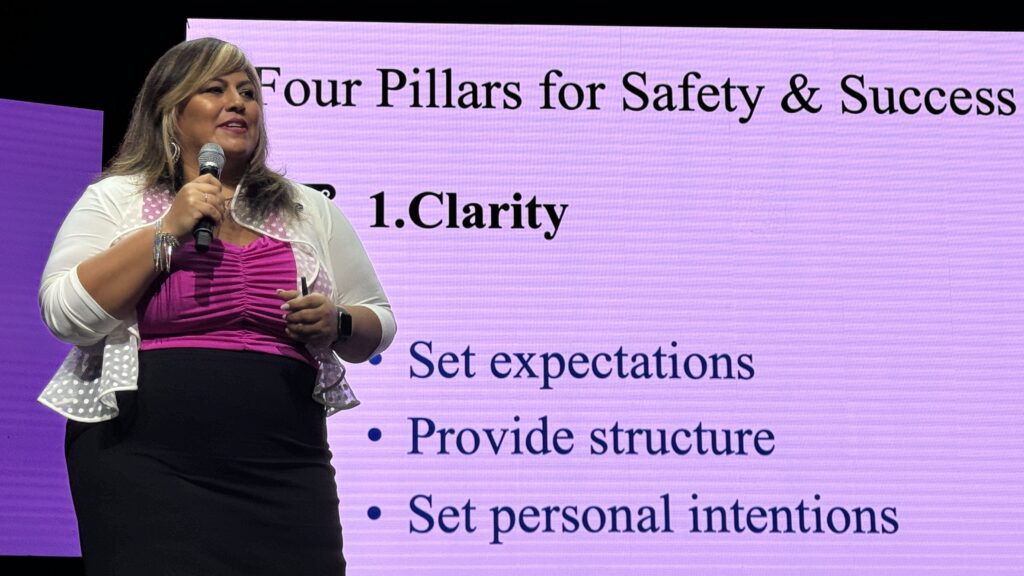Strategic Leadership in Organization is a demand for business success. In today’s fast-paced and unpredictable business environment, operational efficiency alone is no longer enough. Organizations need leaders who can think long-term, anticipate change, and guide their teams through complexity with confidence. This is where strategic leadership in organization becomes essential. Strategic leaders don’t just manage—they inspire direction, create alignment, and drive sustainable growth. But building this kind of leadership isn’t something that happens overnight. It requires a deliberate effort to develop vision, agility, and decision-making capabilities across all levels of the organization.
In this blog, we’ll explore practical steps to build strategic leadership in your organization—whether you’re nurturing future leaders, strengthening your executive team, or transforming your entire leadership culture. From mindset shifts to structural changes, we’ll break down what it takes to cultivate leaders who think beyond the day-to-day and lead with purpose and foresight.
What is Strategic Leadership in an Organization?
Building strong leadership is one of the most important aspects of an organization’s growth. A leader who knows strategic leadership can inspire their team. They make smart choices and guide the company toward its goals.
Strategic leadership in organization is when leaders help everyone work together to meet the company’s goals. They make smart choices, help the team grow, and lead the company through tough times. Strategic leaders look ahead and make plans for the future. They know how to change when needed and help the company move forward.
Why is Strategic Leadership in an Organization Important?
Strategic leadership is important because it helps the company stay on track. A good leader can make hard decisions and help the team work well together. Leaders who think big can help everyone make smart decisions and keep the company moving toward its goals.
Key Qualities of a Great Leader
To be a great leader, there are certain qualities that help them lead well. These qualities help leaders make smart choices and inspire their teams to do their best.
- Visionary Thinking: Great leaders have a clear plan for the future. They can see what’s coming and help the company get ready.
- Decision-Making Skills: Good leaders make choices that help the company now and in the future. They think about what’s best for the company.
- Communication: Leaders must talk clearly with the team. They need to share their plans and make sure everyone understands.
- Collaboration: Great leaders work well with others. They bring people together to work toward a common goal.
- Adaptability: Good leaders can adjust to changes. They help the team handle surprises and keep moving forward.
How to Build a Culture of Leadership
Building a strong leadership team doesn’t happen right away. It takes time and effort and development of leadership strategies. Here are some ways to build strong leaders:
- Offer Leadership Training: Help people grow by giving them training. Teach them how to think, make decisions, and talk to others.
- Encourage Creativity and Risk-Taking: Let leaders try new ideas. Encourage them to think outside the box and try new things.
- Create Open Communication: Leaders need to talk openly with their team. This helps everyone stay on the same page.
- Align Leadership with Company Values: Great leaders follow the company’s values. This helps them make decisions that are good for everyone.
Strategic Leadership and Goal Setting
Setting goals is a key part of leadership. Good leaders set clear goals and help the team reach them.
- Set SMART Goals: SMART goals are specific, measurable, achievable, relevant, and time-bound. This helps leaders stay focused and helps the team know what to do.
- Break Big Goals into Small Steps: Big goals can be hard. Leaders break them down into smaller tasks to help the team get started and stay on track.
- Measure Success: Leaders need to check on progress. They measure success and make changes when needed.
Developing Future Leaders
To build strong leaders for the future, help them grow today. Here’s how:
Mentorship Programs: Establish mentorship programs where experienced leaders can guide younger leaders. This helps pass on critical skills and knowledge that promote strategic leadership.
Provide Leadership Opportunities: Give potential leaders the chance to take on more responsibilities. Give leadership roles in small projects. This allows them to build skills before tackling bigger tasks.
Encourage Continuous Learning: Encourage leaders to continue learning and growing. Offer courses, seminars, and workshops. These help them keep up with industry trends and improve leadership skills.
How Strategic Leadership Helps with Change

Leaders help companies go through change. Change happens, and leaders must help the team adjust. They plan ahead and keep everyone focused on the future.
Plan for Change: Strategic leadership in an organization means anticipating change and planning accordingly. Leaders must spot potential risks. They should also have plans ready to tackle any unexpected challenges.
Communicate the Vision: When leading through change, effective communication is key. Leaders must communicate why they are making changes, how they will install them, and what the expected outcomes will be.
Provide Support: Change can be difficult for employees. Strategic leaders support their teams during transitions. They help them adapt and thrive.
Hanna: Empowering Strategic Leadership in Organizations
In an era where adaptability and foresight define success, Hanna Bauer stands out as a strong strategic leader and trusted advisor to organizations seeking long-term growth. With years of experience in executive coaching and organizational transformation, Hanna offers specialized consultations focused on building strategic leadership capabilities across all levels of a company.
Hanna’s approach is not about quick fixes—it’s about laying a strong foundation for leadership that thrives in complexity. She works closely with CEOs, senior managers, and emerging leaders to develop a strategic mindset, sharpen decision-making, and align vision with execution. Her consultations are grounded in real-world challenges, offering actionable strategies that promote resilience, innovation, and sustainable impact.
One of Hanna’s strengths is her ability to tailor solutions based on organizational culture, industry trends, and leadership maturity. Whether it’s guiding a startup through its first leadership transition or helping a multinational redefine its strategic direction, Hanna brings insight, structure, and inspiration to every engagement.
Her services cover a wide range of areas, including leadership development, executive coaching, change management, team alignment, and succession planning. She also offers customized training programs and strategic retreats designed to unlock leadership potential and prepare organizations for future challenges.
A notable advantage Hanna brings to her clients is her fluency in Spanish. This enables her to consult with multicultural teams, facilitate bilingual sessions, and serve organizations operating in Latin America, Spain, or Spanish-speaking communities in the U.S. Her cultural sensitivity and language skills allow her to bridge communication gaps and create more inclusive leadership strategies.
Hanna’s mission is simple but powerful: to empower organizations with the leadership strength they need to not just survive, but lead. With a deep understanding of strategic leadership in organizations, she is a valuable partner for any team ready to transform its future.
Conclusion
Strategic leadership in organization is key to driving growth and long-term success in an organization. To build a strong leadership team, focus on key qualities. Set clear goals and encourage collaboration and communication. Leaders help the organization face challenges. Their strategic thinking keeps progress going toward meeting goals. Investing in leadership development helps future leaders grow. This builds success and sustainability for your organization.
FAQs
What is the difference between leadership and strategic leadership?
Leadership refers to the ability to guide, inspire, and motivate individuals or teams to achieve a shared goal. It focuses on day-to-day operations, team dynamics, and short-term objectives. Strategic leadership, on the other hand, goes a step further by aligning these efforts with the long-term vision and goals of the organization. It involves high-level planning, anticipating future challenges, and making informed decisions that shape the direction of the company. While general leadership is about doing things right, strategic leadership is about doing the right things for future growth and sustainability.
How can strategic leadership impact organizational growth?
Strategic leadership in organization plays a critical role in driving sustainable organizational growth. By setting a clear vision and long-term goals, strategic leaders create a roadmap for success. They identify emerging opportunities, manage risks effectively, and foster a culture of innovation. This proactive approach enables businesses to stay competitive and responsive to market changes. Additionally, strategic leaders promote alignment between departments, encourage collaboration, and ensure that resources are used efficiently. As a result, the organization becomes more resilient and capable of scaling operations, expanding its reach, and achieving measurable growth.
How do I develop strategic leaders in organization?
Developing strategic leadership in organization requires a structured and supportive approach. Start by investing in comprehensive leadership training programs that focus on strategic thinking, decision-making, and change management. Establish mentorship initiatives where experienced leaders can guide emerging talent. Create opportunities for employees to take on challenging projects or cross-functional roles that build strategic insight. Encourage a culture of continuous learning through workshops, seminars, and access to educational resources. It’s also important to recognize and reward leadership potential, providing clear pathways for career advancement and increased responsibility.
What are the key components of strategic leadership in an organization?
Strategic leadership is built on several essential components. Visionary thinking allows leaders to see the bigger picture and anticipate future trends. Strong decision-making skills enable them to weigh risks and opportunities effectively. Clear and transparent communication ensures that goals and expectations are understood across all levels. Collaboration encourages teamwork and innovation, fostering a unified approach to challenges. Adaptability allows leaders to remain flexible in the face of change, guiding the organization through uncertainty while maintaining focus on long-term objectives. Together, these components empower leaders to navigate complex environments and achieve sustained success.
How does strategic leadership in an organization help in times of change?
During periods of change, strategic leadership provides clarity, stability, and direction. It involves planning for transitions well in advance, identifying potential obstacles, and developing strategies to overcome them. Strategic leaders communicate openly with their teams, ensuring that everyone understands the reasons behind the change and what is expected moving forward. They also offer support, resources, and encouragement to help employees adapt to new circumstances. By maintaining focus on the organization’s long-term goals and vision, strategic leaders help reduce uncertainty, boost morale, and ensure that change becomes a stepping stone rather than a setback.


